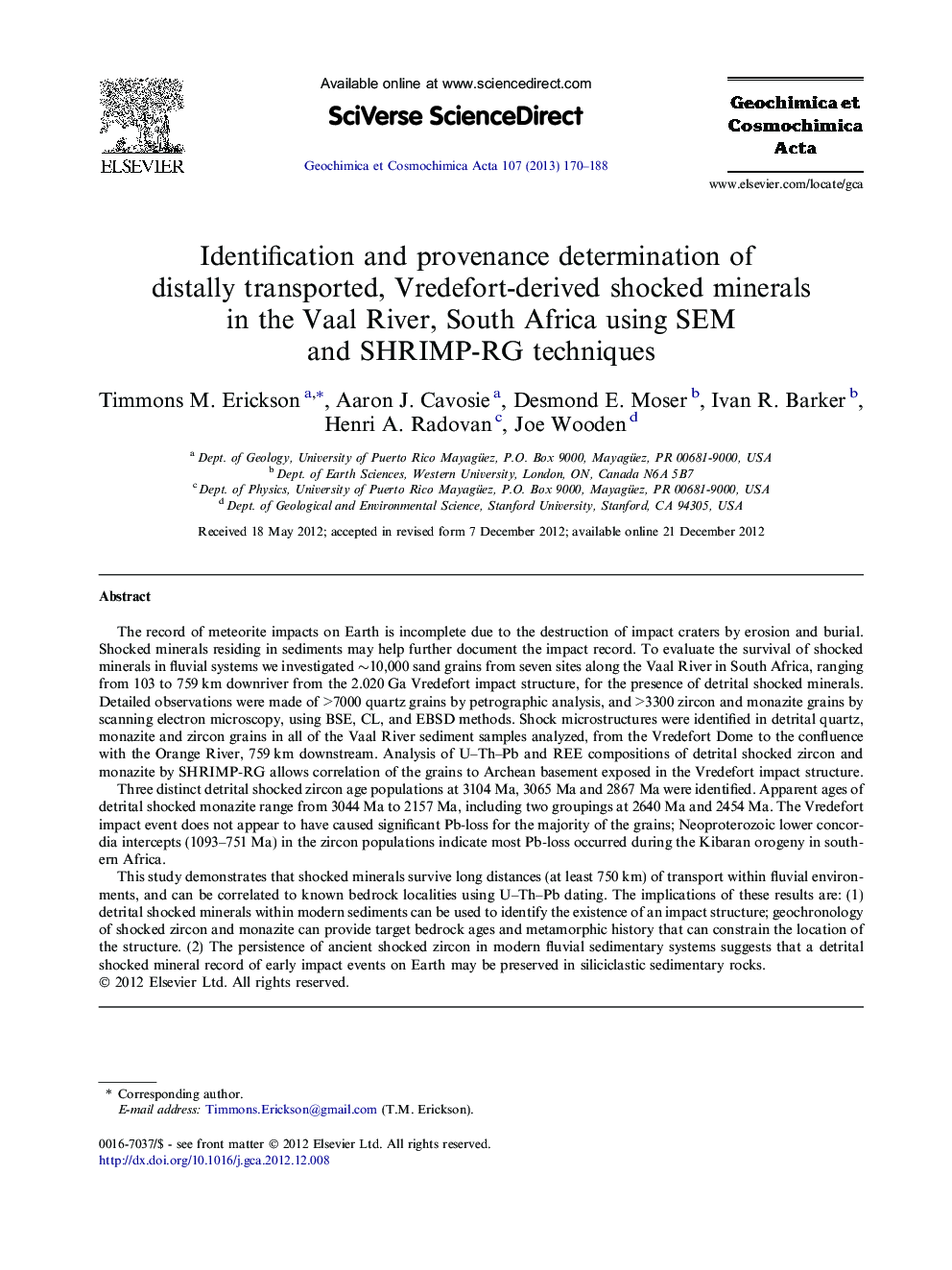| Article ID | Journal | Published Year | Pages | File Type |
|---|---|---|---|---|
| 4702465 | Geochimica et Cosmochimica Acta | 2013 | 19 Pages |
The record of meteorite impacts on Earth is incomplete due to the destruction of impact craters by erosion and burial. Shocked minerals residing in sediments may help further document the impact record. To evaluate the survival of shocked minerals in fluvial systems we investigated ∼10,000 sand grains from seven sites along the Vaal River in South Africa, ranging from 103 to 759 km downriver from the 2.020 Ga Vredefort impact structure, for the presence of detrital shocked minerals. Detailed observations were made of >7000 quartz grains by petrographic analysis, and >3300 zircon and monazite grains by scanning electron microscopy, using BSE, CL, and EBSD methods. Shock microstructures were identified in detrital quartz, monazite and zircon grains in all of the Vaal River sediment samples analyzed, from the Vredefort Dome to the confluence with the Orange River, 759 km downstream. Analysis of U–Th–Pb and REE compositions of detrital shocked zircon and monazite by SHRIMP-RG allows correlation of the grains to Archean basement exposed in the Vredefort impact structure.Three distinct detrital shocked zircon age populations at 3104 Ma, 3065 Ma and 2867 Ma were identified. Apparent ages of detrital shocked monazite range from 3044 Ma to 2157 Ma, including two groupings at 2640 Ma and 2454 Ma. The Vredefort impact event does not appear to have caused significant Pb-loss for the majority of the grains; Neoproterozoic lower concordia intercepts (1093–751 Ma) in the zircon populations indicate most Pb-loss occurred during the Kibaran orogeny in southern Africa.This study demonstrates that shocked minerals survive long distances (at least 750 km) of transport within fluvial environments, and can be correlated to known bedrock localities using U–Th–Pb dating. The implications of these results are: (1) detrital shocked minerals within modern sediments can be used to identify the existence of an impact structure; geochronology of shocked zircon and monazite can provide target bedrock ages and metamorphic history that can constrain the location of the structure. (2) The persistence of ancient shocked zircon in modern fluvial sedimentary systems suggests that a detrital shocked mineral record of early impact events on Earth may be preserved in siliciclastic sedimentary rocks.
